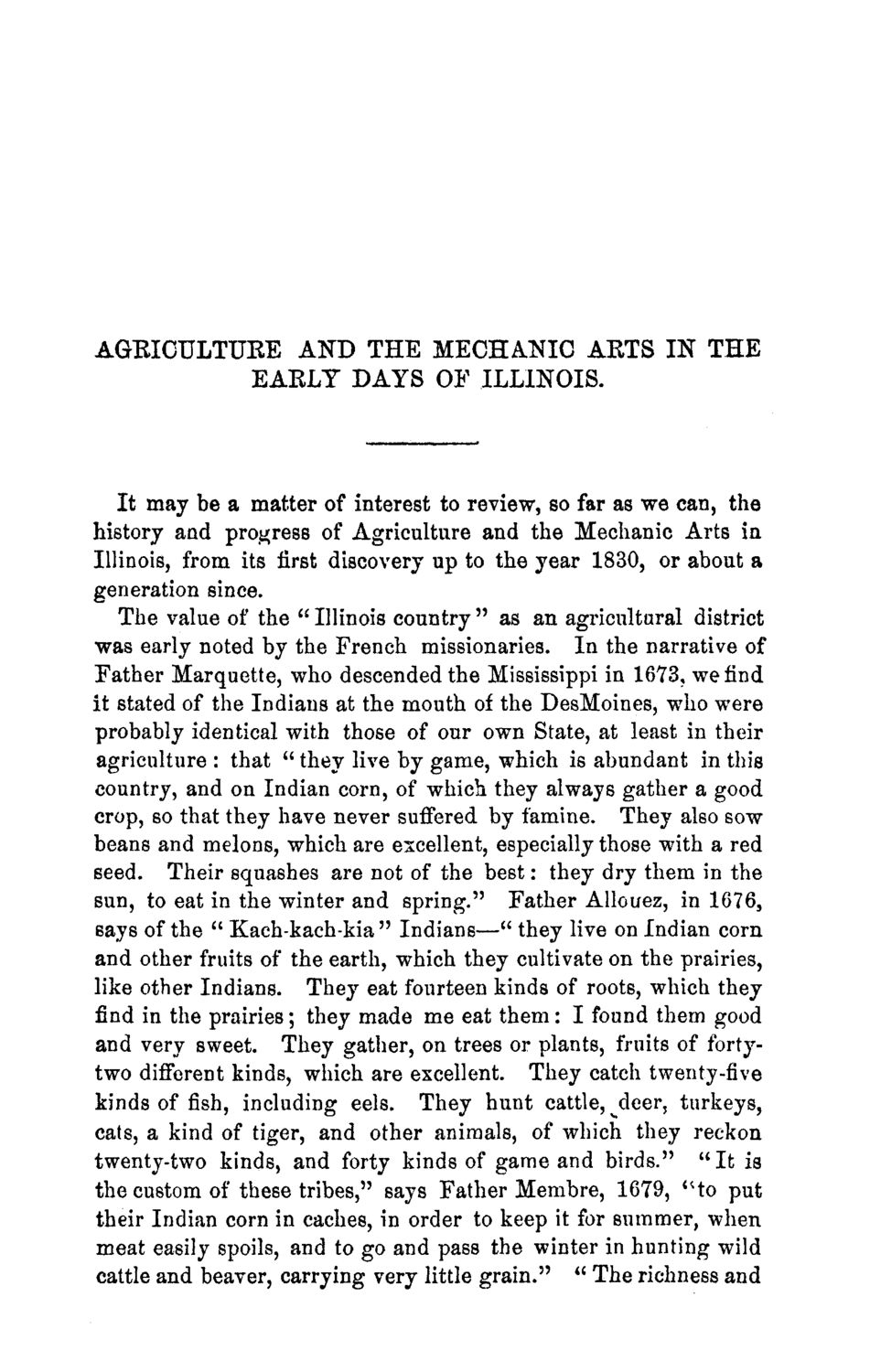| |
| |
Caption: Board of Trustees Minutes - 1868
This is a reduced-resolution page image for fast online browsing.

EXTRACTED TEXT FROM PAGE:
AGBICULTUKE AND THE MECHANIC ARTS IN THE EAELY DAYS OF ILLINOIS. It may be a matter of interest to review, so far as we can, the history and progress of Agriculture and the Mechanic Arts in Illinois, from its first discovery up to the year 1830, or about a generation since. The value of the " Illinois country " as an agricultural district was early noted by the French missionaries. In the narrative of Father Marquette, who descended the Mississippi in 1673, we find it stated of the Indians at the mouth of the DesMoines, who were probably identical with those of our own State, at least in their agriculture : that " they live by game, which is abundant in this country, and on Indian corn, of which they always gather a good crop, so that they have never suffered by famine. They also sow beans and melons, which are excellent, especially those with a red seed. Their squashes are not of the best: they dry them in the sun, to eat in the winter and spring." Father Allouez, in 1676, says of the " Kach-kach-kia " Indians—" they live on Indian corn and other fruits of the earth, which they cultivate on the prairies, like other Indians. They eat fourteen kinds of roots, which they find in the prairies; they made me eat them: I found them good and very sweet. They gather, on trees or plants, fruits of fortytwo different kinds, which are excellent. They catch twenty-five kinds of fish, including eels. They hunt cattle, ^deer, turkeys, cats, a kind of tiger, and other animals, of which they reckon twenty-two kinds, and forty kinds of game and birds." " I t is the custom of these tribes," says Father Membre, 1679, ^to put their Indian corn in caches, in order to keep it for summer, when meat easily spoils, and to go and pass the winter in hunting wild cattle and beaver, carrying very little grain." " The richness and
| |